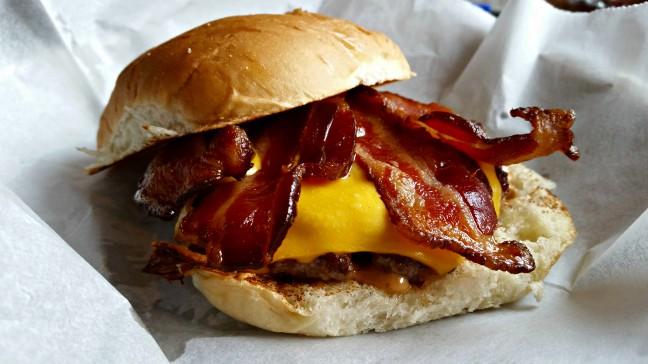A research collaboration between the University of Wisconsin and the Good Food Institute is pushing the boundaries of artificial meat production.
Professor of comparative biosciences Masatoshi Suzuki researches the biology of artificial meat and its potential as an alternative to farm-raised meat products. Suzuki works with the Good Food Institute to research the technological and biological barriers to industrial meat production.
Suzuki heads the Suzuki Lab within UW’s School of Veterinary Science. The lab’s research focuses on progenitor stem cells that can rebuild muscle tissue structure. Collaborating with the Good Food Institute, Suzuki’s stem cell research helps develop solutions to current challenges in the rising artificial meat industry, particularly structuring artificial tissue and promoting correct cell development.
The Good Food Institute is a nonprofit organization promoting meat alternative product development. According to their website, they provide grants to researchers like Suzuki to find sustainable solutions and products that can replace meat in people’s diets. In return for his expertise and research, the institute helps fund other research projects in his lab, Suzuki said.
Why create alternative meat products? Farm animals raised for meat convert vegetable matter into lean protein, but inefficiently, Suzuki said. Much of the energy contained in animal feed goes to non-edible tissues such as bone and keeps the animal alive. Additionally, housing, transporting and processing farm animals requires vast amounts of farmland and fossil fuels.
In light of this inefficient process and increasing food demand, researchers and policymakers around the world are seeking alternative protein sources. According to a 2009 United Nations press release, as the world’s population grows, food production needs to be doubled by 2050 to prevent famine and food shortage.
Plant-based meats such as the Beyond Burger have already hit the markets but cultivated, or lab-grown artificial meat, is increasingly becoming a viable option, Suzuki said.
Producing meat from lab-grown cells with the same taste, appearance and nutritional value as farm-grown meat, is quickly becoming a more financially and environmentally friendly alternative, according to the Good Food Institute’s website. As the industry grows, more private companies are seeking to partner with researchers like Suzuki to develop alternative meat products.
According to a Forbes article, a single artificial beef patty costed $330,000 to produce in 2013. By 2019, the cost dropped to $12.00 a burger. While this is still far more expensive than real beef, the industry is close to producing cell-based meat with similar nutritional value and cost to farm-raised beef, Suzuki said.
Meat science and muscle biology lab director James Claus’ research compares the taste and tissue composition of farm-raised meat to artificial meats currently in development. Claus said it’s currently very expensive to produce a cell culture that allows lab-grown tissue to metabolize the same nutrients as farm-grown.
But as scientists develop new processes, Suzuki said, the price steadily decreases, and people can expect to see costs comparable to farm-raised meat in the near future.
Claus’s work with farm-raised animal meat provides structural, taste and nutritional insight into what makes meat “meaty” and how to achieve similar qualities in cell-based meat.
High-protein vegetables and “fake” plant-based meat have been around for a while. Plant-based meats differ from cell-based meat because they are made from combinations of cereal and vegetable products such as corn and soy. Cell-based products are made with actual animal tissue cells ethically removed from domestic animals, Claus said.
Cultivated, or cell-based meat, imitates the nutrition, taste and appearance of farm-raised animals using the same proteins and nutrients found in farm-raised meat, Suzuki said.
“There are two flavors in meat — the meaty flavor and the species flavor,” Claus said. “Proteins in the muscle cells, called myofibers, make meat taste like meat, and fat cells permeating the muscle tissue make it taste like the animal it comes from.”
The current challenge, Claus said, is to produce animal muscle tissue. Growing muscle cells into tissue is simpler than adding the structural and fat cells that provide shape and taste to muscle tissue. According to Claus, these structural and fat cells will eventually allow cell-based meat to taste and look like cuts of real meat.
Since cell-based meat is made from animal cells, it could be nutritionally similar to real meat, Suzuki said. But studies, including his own, are still ongoing.
“We do not yet have the data to show it [cell-based meat] is healthier than vegetable substitutes or plant-based artificial meats,” Suzuki said.
Because getting just muscle cells to reproduce themselves is the challenge now, the first cell-based meat alternatives will likely resemble ground-up meat, Suzuki said. The next step will be adding beef, pork, or chicken fat cells to the growth process.


